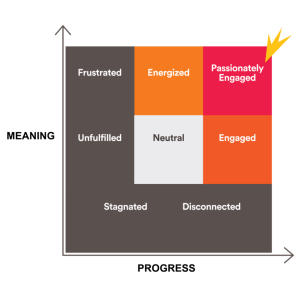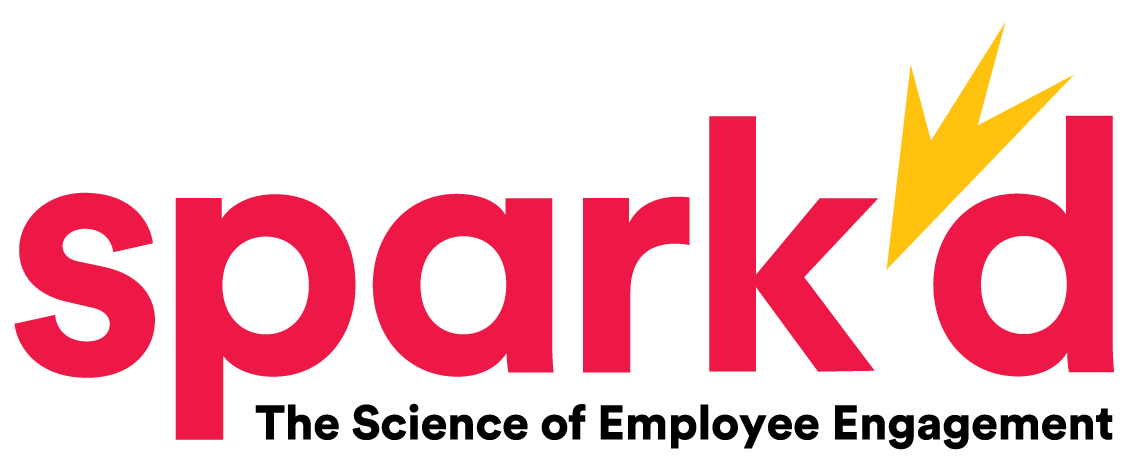Can Employees Be Given Responsibility for Their Own Engagement Levels? And if So, How?
Who should be responsible for individuals’ engagement levels?
In most organizations it is understood that one of the roles of leaders, is to ensure that the people in their charge are continually motivated and engaged. That seems reasonable. After all, attracting and retaining talented people is tightly correlated with having an engaged workforce. So there are few more important tasks for leaders in any organization than to create the conditions in which people can become and stay, highly – preferably passionately – engaged.

However, no one wants or likes to feel ‘processed’ or ‘manipulated’. And that is the danger with most engagement surveys and the ensuing process. The survey is completed – at the instigation of the organization’s leaders – and the results reported back – to the leaders. They – the leaders – then take action to address the problems (opportunities for improvement) that have been discovered. In that all too common scenario, it can’t help but feel as if engagement is being done to people – the very opposite of the empowerment that we all crave.
So, how could it be done differently?
Give employees responsibility – and the right tools – to take control
All employee engagement surveys have one thing in common – they are completed by the employees! Then results are aggregated at team and/or company level. Conclusions are drawn – by leaders – and action plans formulated. And sometimes those action plans are even implemented! And yes, it’s the leaders who usually do this too.
But what if, having asked employees what they think and feel about their work and the environment they are working within, we were to give them valuable insights that told them, in a concise way, what ‘state’ they were in? And along with that, we gave them additional insights that empowered them to take specific actions themselves that would maximize their chances of becoming or staying passionately engaged. Now wouldn’t that be thing!
What do we mean when we talk about employees’ ‘states’
At Spark’d, our science identifies eight dominant emotions that describe how people feel at work.
 How people feel is their emotional state. And we know what generates these emotions. There are two simple but powerful ingredients that, in different combinations, create either negative states, such as Disconnected, Stagnated, Unfulfilled and Frustrated, or a Neutral feeling, or, if we are lucky, positive feelings, such as Energized, Engaged and Passionate.
How people feel is their emotional state. And we know what generates these emotions. There are two simple but powerful ingredients that, in different combinations, create either negative states, such as Disconnected, Stagnated, Unfulfilled and Frustrated, or a Neutral feeling, or, if we are lucky, positive feelings, such as Energized, Engaged and Passionate.
What are those two ingredients? Meaning + Progress.
When we see our work and career as highly meaningful and we are also experiencing a high sense of progress, we are going to be “in the zone” or passionately engaged.
You see, engagement is an EMOTION. It’s about how we feel when we are at work. It’s an emotion that describes our overall feeling of our work experience.
How can these insights enable employees to take ownership?
On their own, the insights – which state an individual is experiencing – can’t change anything. But the Spark’d model and the individual feedback which each employee receives, goes much further.
We have identified the specific drivers that most affect both meaning and progress. So that when an employee gets their individual, personal (and private) feedback they get to see exactly where they need to focus to make rapid positive changes, And better still, every employee is presented with suggested actions to choose from, enabling them to build their own personal action plan to shift the dial on either meaning or progress – and perhaps both.
If all of that sounds revolutionary, that’s because it is. That is the Spark’d difference…and it changes everything!
If you would like to find out more, scroll down to the form below to contact us. We would love to talk to you about how the Spark’d engagement survey could help your organization.

